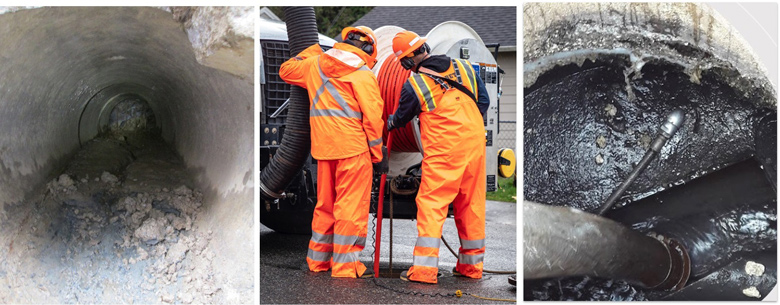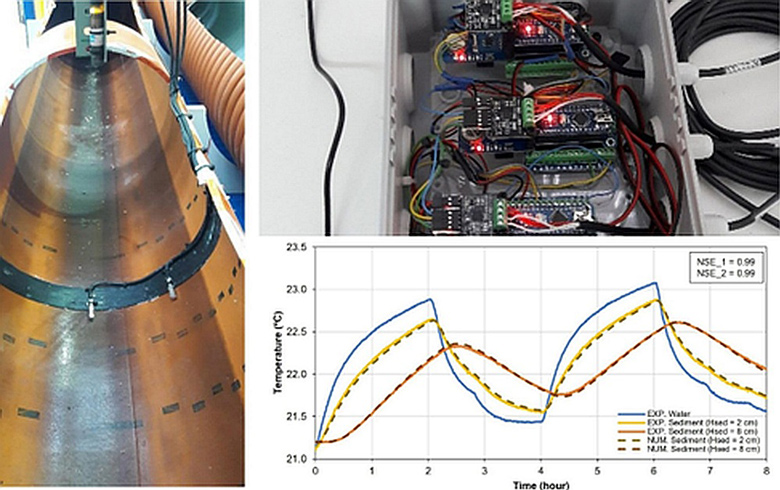Sewer solids?
The truth is that most people are not aware of the wastewater they produce at home. We only see how water fluxes down the toilet, but most of us are not conscious of all the engineering that exists later. Wastewater travels a long way to reach the facilities where it is treated to avoid polluting and damaging aquatic ecosystems. The systems for transporting wastewater have existed since Roman times. From that time until modern days, the design of sewer and drainage systems has been approached as an exclusively hydraulic problem. It is only in recent decades that design criteria have been approached from other perspectives, such as environmental and urban analysis.
(image by Lukas Lechz, CC-BY-SA licence)
It shall be remarked that not only water flows in these systems. Since it is wastewater, solids and other unpleasant components are also transported. One of the most traditional problems that we encounter regarding these solids is sedimentation. This phenomenon usually occurs in pipes with insufficient discharge capacity, i.e., low flow velocities, and during long dry weather periods. The main problem resulting from this accumulation of sediments is the reentrainment of these particles in wastewater flow during heavy rains. The scouring and transport of sediments causes high pollution peaks in sewers and drainage systems, which may lead to overloads in wastewater treatment plants or environmental damages in case of uncontrolled spills.
Currently, there is still a lack of knowledge about how these sediments accumulate and are transported through sewers and drainage networks. The Holy Grail of sewer research would be a sensor to obtain data on the sediment transport to develop models that predict their behaviour. However, it should be noted that it is difficult to measure in these harsh environments because of their corrosive atmosphere.

In addition, any bulky equipment introduced into the wastewater will end up fouled and clogged by waste and therefore causing blockages that will reduce the performance of these systems.
From my postdoctoral research, I developing a system to measure sediments that accumulate in urban drainage systems. This work continues the research line that I started with my PhD thesis [1]. The novelty of my postdoc research is the use of temperature sensors, which are tiny and easy to install and to connect through a remote communication system, despite the challenging environment [2]. They also have low battery power consumption and are quite affordable. The idea of this research is based on analysing heat transfer processes between daily temperature patterns in wastewater and sediment beds. For this purpose, it is necessary to measure the temperature in both media since there is a temperature amplitude attenuation and time lag due to thermodynamic processes. This phenomenon is accentuated the higher the amount of accumulated sediments [3]. Therefore, by analysing the differences that occur between the temperature series in the wastewater and the sediment bed it would be possible to measure and thus monitor the sediment accumulation. And first results, which we are currently refining in the Co-UDLabs project look quite promising! [4]

Perhaps many of you are thinking that these are not the most hygienic working conditions. In fact, when people ask my friends about my profession, they always say the same: ‘Manu? He is a poop engineer’, and they are right, since there always has to be someone to do the dirty job. Have you ever been to a wastewater treatment plant? Well, you should. You would be amazed by all that comes into these facilities.
References
[1] PhD thesis, http://hdl.handle.net/2183/26624
[2] Postdoc project: https://www.eawag.ch/en/department/sww/projects/sedtemp/
[3] Zenodo dataset: https://doi.org/10.5281/zenodo.7827667
[4] First results: https://doi.org/10.1039/D2EW00820C














1 Comments
Zurab